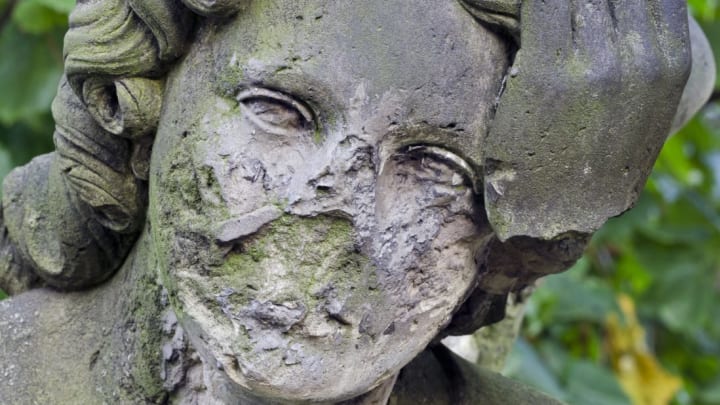This is a question that a lot of people have asked. If you have ever visited a museum, you have probably seen ancient sculptures such as the one below—a Greek marble head of the poet Sappho currently held in the Glyptothek in Munich, with a missing nose:

A smashed or missing nose is a common feature on ancient sculptures from all cultures and all time periods of ancient history. It is by no means a feature that is confined to sculptures of any particular culture or era. Even the nose on the Great Sphinx, which stands on the Giza Plateau in Egypt alongside the great pyramids, is famously missing:

If you have seen one of these sculptures, you have probably wondered: “What happened to the nose?” Some people seem to have a false impression that the noses on the majority of these sculptures were deliberately removed by someone.
It is true that a few ancient sculptures were indeed deliberately defaced by people at various times for different reasons. For instance, there is a first-century AD Greek marble head of the goddess Aphrodite that was discovered in the Athenian Agora. You can tell that this particular marble head was at some point deliberately vandalized by Christians because they chiseled a cross into the goddess’s forehead.
This marble head, however, is an exceptional case that is not representative of the majority of ancient sculptures that are missing noses. For the vast majority of ancient sculptures that are missing noses, the reason for the missing nose has nothing to do with people at all. Instead, the reason for the missing nose simply has to do with the natural wear that the sculpture has suffered over time.
The fact is, ancient sculptures are thousands of years old and they have all undergone considerable natural wear over time. The statues we see in museums today are almost always beaten, battered, and damaged by time and exposure to the elements. Parts of sculptures that stick out, such as noses, arms, heads, and other appendages are almost always the first parts to break off. Other parts that are more securely attached, such as legs and torsos, are generally more likely to remain intact.
You are probably familiar with the ancient Greek statue shown below. It was found on the Greek island of Melos and was originally sculpted by Alexandros of Antioch in around the late second century BC. It is known as the Aphrodite of Melos or, more commonly, Venus de Milo. It famously has no arms:

Once upon a time, the Aphrodite of Melos did, in fact, have arms, but they broke off at some point, as arms, noses, and legs often tend to do. The exact same thing has happened to many other sculptures’ noses. Because the noses stick out, they tend to break off easily.
Greek sculptures as we see them today are merely worn-out husks of their former glory. They were originally brightly painted, but most of the original pigments faded or flaked off long ago, leaving the bare, white marble exposed. Some exceptionally well-preserved sculptures do still retain traces of their original coloration, though. For example:

Even for the sculptures that do not retain visible color to the naked eye, archaeologists can detect traces of pigment under an ultraviolet light using special techniques. There are also dozens of references to painted sculptures in ancient Greek literature, such as in Euripides's Helen, in which Helen laments (in translation, of course):
“My life and fortunes are a monstrosity, Partly because of Hera, partly because of my beauty. If only I could shed my beauty and assume an uglier aspect The way you would wipe color off a statue.”
This post originally appeared on Quora. Click here to view.
